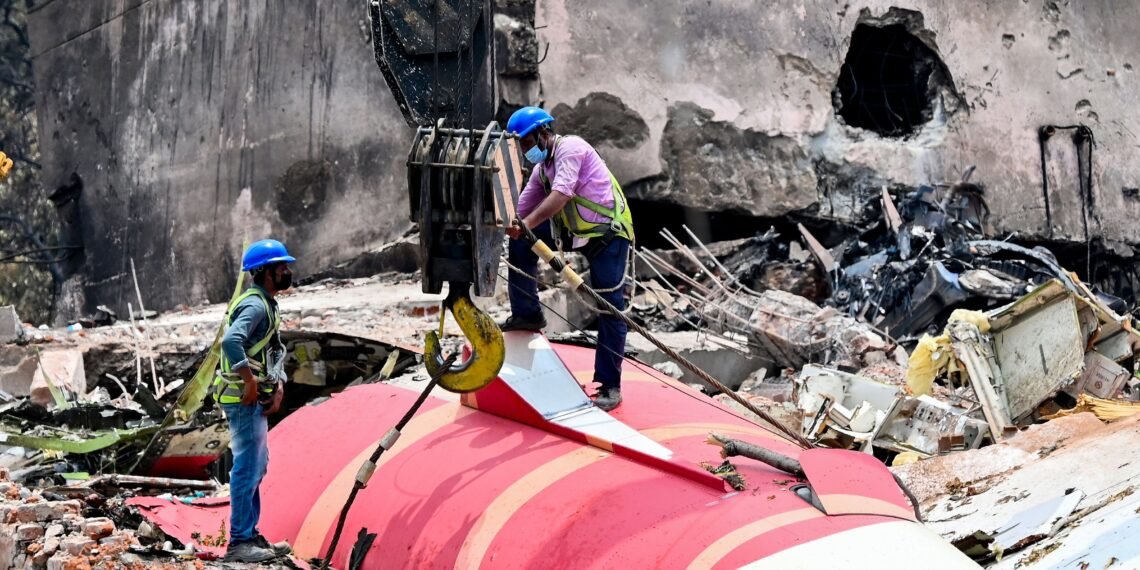The FIP accused investigators of sidelining pilot representation and selectively using cockpit audio to build a narrative of human error—while technical failures are being publicly dismissed.
BY PC Bureau
Amid increased scrutiny of the pilots of the ill-fated Air India Flight AI171, the Federation of Indian Pilots (FIP) has strongly condemned what it calls a premature and biased narrative emerging from the ongoing investigation.
The pilot body has taken issue with the preliminary probe findings as well as public commentary, accusing authorities of excluding pilot representation and selectively interpreting cockpit voice recordings in a way that unfairly blames the flight crew for the tragedy.
In a strongly worded statement, the FIP expressed “serious dissatisfaction” with the Aircraft Accident Investigation Bureau’s (AAIB) findings and the public narrative emerging around the report. “We register our dissatisfaction with the exclusion of pilot representatives from the investigation process,” the FIP said. “We also firmly object to how the preliminary report has been interpreted and presented publicly.”
AI-171 Crash and Boeing’s History of Blaming Dead Pilots https://t.co/XMT5b6l9rt #AI171Crash
#JusticeForPilots @madnish30 @sjlazars #Boeing
#AviationSafety #ALPA #StopPilotScapegoating
#FuelSwitchWarning #AirIndiaCrash #PilotNotGuilty— Navin Upadhyay (@Navinupadhya) July 13, 2025
The 15-page report, released roughly one month after the Boeing 787-8 Dreamliner plunged into a medical hostel complex shortly after takeoff from Ahmedabad, has been widely viewed as placing the onus of the disaster on cockpit mismanagement. The crash claimed 240 of the 241 lives on board.
READ: Chaos and Controversy: ECI Under Fire Over Bihar’s SIR (1)
The FIP said the report lacked comprehensive data and objectivity, pointing to its reliance on “selectively paraphrased cockpit voice recordings” that imply pilot confusion and decision-making lapses. “This approach is neither objective nor complete,” the federation added, warning media and the public against forming premature conclusions.
Probes Raise Questions About Crew Actions
The AAIB’s report cited mid-air engine shutdowns, unclear crew communication, and failed recovery attempts just seconds after takeoff as key factors. A voice recording excerpt revealed one pilot allegedly asking if the other had shut off the fuel valves, followed by a denial — an exchange that investigators say may be crucial.
Still, the AAIB maintained that the investigation is ongoing and cautioned against definitive conclusions. It acknowledged that the final analysis will incorporate wreckage examination, post-mortem findings, maintenance records, and component testing. So far, the bureau has issued no airworthiness directives or safety recommendations related to the Boeing 787 or its GE GEnx-1B engines.
Air India and Boeing Defend Technical Integrity
Air India CEO Campbell Wilson said on Tuesday that the airline had completed precautionary checks of fuel control switches across its 787 fleet and “found nothing wrong.” Wilson added that the aircraft involved in the crash had “no technical or mechanical fault,” according to the airline’s internal evaluations.
“The preliminary report does not indicate a systemic issue with the aircraft,” Wilson said. “Our teams remain fully engaged with AAIB investigators and continue to offer complete cooperation.”
Boeing also reiterated its commitment to the investigation, stating that it will “defer to the AAIB for further updates, in accordance with international aviation safety norms under ICAO Annex 13.”
FIP Urges Due Process, Transparency
The FIP’s criticism underscores a growing rift between pilot bodies and regulatory authorities over the treatment of flight crews in crash investigations. The federation has called for the inclusion of pilot representatives in investigative proceedings and warned against scapegoating.
“Pilots are the last line of defence, not the first line of blame,” the FIP said. “Investigations should be guided by data, not by narratives.”
As the AAIB prepares for a more detailed final report, pressure is mounting to ensure a transparent and unbiased process that reflects the full range of technical, human, and systemic factors involved in the AI171 tragedy.













